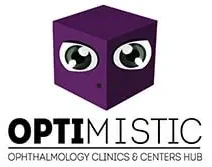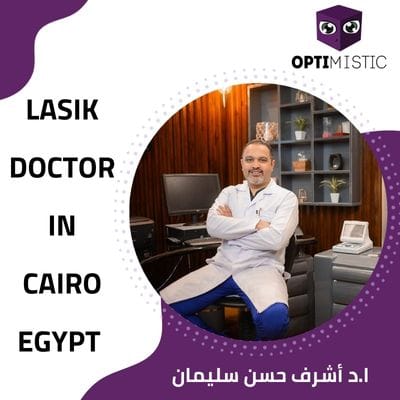Laser cataract surgery
Cataract Surgery with Laser Technology
Femtocataract, the future of cataract surgery. Uncover the advancements in laser technology, its impact on visual outcomes, and how it can transform your vision.
Introduction
Vision aids like glasses and contact lenses are common for correcting vision problems, but more severe issues may require eye surgery. Cataracts, characterized by opacities in the eye’s natural lens, can significantly impair vision and potentially lead to a severe drop in vision if left untreated. They are mostly related to advanced age, but other factors such as infections, eye diseases, trauma, systemic diseases such as diabetes, and drugs such as steroids can cause them. In addition to a few genetic and hereditary conditions. Cataract surgery, including laser cataract surgery, is the only valid recommended solution to remove cataracts and restore clear vision with improved precision.
What is Laser Cataract Surgery?
Laser cataract surgery, also known as laser-assisted cataract surgery or femto cataract, is a breakthrough approach in treating cataracts. By utilizing femtosecond laser technology, this advanced procedure ensures unparalleled precision and accuracy in the various steps involved. Traditionally performed manually with surgical instruments and blades, laser cataract surgery introduces a new level of efficiency.
The Benefits of Laser Cataract Surgery
- Enhanced Precision with 3D Eye Mapping:
Femtolaser cataract surgery utilizes 3D eye mapping to create accurate incisions, tailor lens placement, and enhance surgical precision, resulting in improved outcomes.
- Astigmatism Correction:
Learn how laser cataract surgery can correct astigmatism, a common condition causing distorted vision due to a misshapen cornea.
- High precision incision in the anterior lens capsule and fragmentation of the lens material: this allows easier aspiration of the cataractous lens and less ultrasound energy needed during phacoemulsification hence protecting the corneal layers and especially corneal endothelium reducing post surgical complications.
- Reduced Downtime and Faster Recovery:
Find out how laser cataract surgery reduces swelling and accelerates recovery compared to traditional methods, leading to a shorter downtime for patients.
The Laser Cataract Surgery Procedure Step by Step
- Preparing for Surgery:
eye dilation using eye drops and the importance of 3D mapping for surgical planning.
- The Surgery Experience:
Use of numbing agents, followed by use of lasers creating surgical incisions and breaking up the cataract. The surgery usally lasts about 10-15 minutes.
- Laser Cataract Surgery Recovery:
It is important to follow the post-surgery care instructions, instilling eye drops, wearing protective glasses, resting, managing pain, limitations on strenuous activities, and the importance of follow-up appointments.
Understanding Cataracts; Causes and Symptoms
Cataracts, a common eye disease, primarily affect the elderly population. This condition occurs when the normally clear lens proteins precipitate, becoming less soluble and opaque. The resulting blurry vision and haloes hinder the proper refraction of light rays, leading to distorted, defocused images on the retina and impaired vision. While cataracts usually progress slowly over time, they eventually interfere with daily activities and diminish the quality of life.
The factors contributing to cataract development
- Age
- Excessive exposure to ultraviolet radiation
- Diabetes
- Hypertension
- Obesity
- Smoking
- Prolonged use of systemic corticosteroids medication
- Previous eye injury or inflammation
- Eye disease or operation history
- Hormone replacement therapy
- Alcohol intake
- Severe myopia
- Family history of cataracts
- Some genetic and hereditary diseases
What Are The Most Common Symptoms Of Cataracts?
- Initially, early stages of cataracts have little effect on your vision. The type, density, and distribution of the cataract will determine the type and severity of symptoms you experience and how they occur.
- You may notice that your vision is not completely clear, such as looking through ground glass, or fog, faded washed out colors.
- Cataracts may make the light from the sun or lamp glow or you may notice when driving at night that incoming headlights cause more glare than before and the colors may become faded and not as bright as they used to be.
Other symptoms that affect vision are
- Blurry and fogged vision is the most common symptom.
- Double vision
- Difficulty reading or driving
- Myopia nearsightedness for the elderly especially
- Changes in glasses prescription
Types of Cataracts and Their Impact on Vision
Central nuclear Cataracts:
- Initially causes temporary visual impairment.
- Can be improved with eyeglasses.
- The lens becomes denser dark yellow over time, leading to progressively blurry vision.
Cortical Cataracts:
- Manifest as white lines at the edges of the lens.
- Lines eventually overlap, causing light scattering and image distortion.
Posterior Cataracts:
- Develop rapidly near the central part of the posterior lens layer.
- Significantly impact vision especially when reading
Congenital Cataracts:
- Associated with genetic hereditary disorders and maternal diseases during pregnancy. Can impact the normal development of the eye and vision leading to lazy eyes or squint if dense and untreated
Diagnosis Of Cataracts
To diagnose cataracts, your doctor will take a full medical history and follow up on your symptoms by performing a thorough eye exam, which may include several tests.
These tests include:
- The visual acuity test measures your ability to read some letters of varying sizes, displayed at a specific distance. Each eye is tested individually, and the doctor determines the strength of your sight and ability to see colors.
- Slit lamp examination uses a slit-shaped line of light to illuminate the cornea, iris, lens, and other structures in the eye. In addition, the distance between the cornea and the iris can be measured, allowing the doctor to detect any abnormalities.
- Detailed examination of the retina through the slit lamp after instilling special eyedrops to widen the pupil of the eye, which allows the doctor to see into the eye, making it easier to detect cataracts
How Does Laser Cataract Surgery Work?
The surgical process is relatively simple and usually takes around 10-15 minutes. It starts by making small corneal incisions, and a uniform opening in the lens capsule followed by fragmentation of the lens proteins. After that, the surgeon removes the opacified lens fragments with a special machine that uses ultrasound waves to further dissolve and absorb the lens opacity and finally places a suitable artificial lens.
Some individuals may still require glasses for specific activities like reading, regardless of the lens type. If both eyes have cataracts, it is often recommended to perform the surgeries separately, with a few days interval between them.
Laser cataract surgery involves utilizing a camera, microscope, and ultrasound device to map the eye’s surface and guide the femtosecond laser. The laser creates precise incisions in the cornea, allowing access to the cataract-affected lens. It also softens and breaks up the cataract, facilitating its removal. The use of laser technology enhances the accuracy and reproducibility of the surgical steps, resulting in improved visual outcomes.
Conclusion
In summary, laser cataract surgery, also known as laser-assisted cataract surgery or femtocataract, is a state-of-the-art procedure that utilizes femtosecond laser technology to enhance the precision and accuracy of cataract removal. The procedure offers several advantages, including improved visual outcomes, astigmatism correction, reduced energy requirements, fewer complications and faster recovery. However, candidacy for laser cataract surgery should be determined by your trusted ophthalmologist based on numerous individual factors. If you’re considering cataract surgery, consult with a qualified eye care professional to explore your treatment options and determine the best approach for your specific needs.
What are the common side effects of laser cataract surgery ?
These include mild itching, discomfort, and slight swelling of your eyelids. Learn how these effects can be managed.
When to seek medical attention?
Recognize potential complications post-surgery, such as intense pain, loss of vision, eyelid swelling, flashes of light or dots in vision, and worsening eye redness. Know when to contact your doctor for immediate medical attention.
At The Optimistic Eye Center, Dr. Ashraf Soliman provides laser cataract treatment, Dr. Ashraf Soliman, an experienced eye consultant specializing in corneal, cataract, laser refractive correction and glaucoma surgery in Egypt. He is also a professor of ophthalmology at Ain Shams University, faculty of medicine


